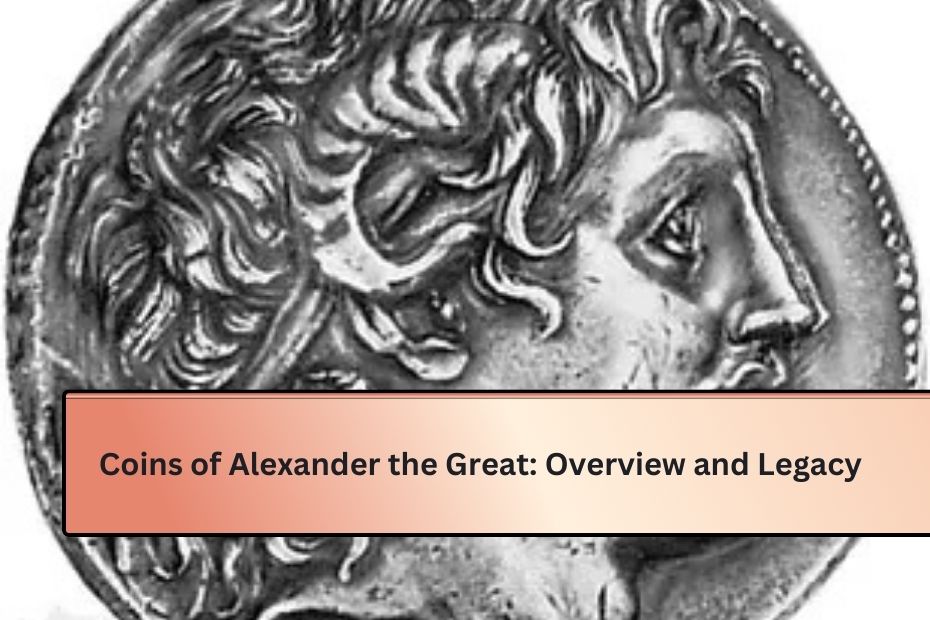Alexander the Great, one of history’s most iconic leaders, not only left a legacy through his military conquests but also through his coinage, which shaped trade and culture in the ancient world. His coins, often called Alexander type coins, became widely circulated, marking his influence even after his death. To fully understand his coinage, we must first look at his father, Philip II of Macedon, whose minting practices influenced Alexander’s.
Coins of Philip II
Philip II’s Reign and Coinage
Philip II ruled Macedon from 359 to 336 BC and laid the foundation for his son’s empire. His coins, like the Tetradrachms, showcased the head of Zeus and a youth on horseback. These coins were primarily struck in the mints of Pella and Amphipolis. Even though Philip expanded Macedon’s borders and power, his coins didn’t feature much diversity in design.
Significance of Philip’s Coins
Though not known for significant variety, the coins of Philip II represented Macedon’s strength. The Tetradrachms and other silver coins helped establish Macedonian coinage as a standard that Alexander later adopted and expanded upon.
Alexander the Great’s Coins
Standardization and Expansion
Alexander the Great’s coins were notable for their consistency and widespread use, serving as a medium for trade throughout his empire. His coins adhered to the Attic standard, which set a benchmark for weight and design. The obverse of Alexander’s coins often depicted Herakles wearing a lion skin, while the reverse showed Zeus, reflecting divine favor and strength.
Posthumous Coins and the Wars of the Diadochi
After Alexander’s death in 323 BC, his generals, known as the Diadochi, fought for control over his vast empire. During this time, they continued to mint coins with Alexander’s design, maintaining a sense of continuity. These coins, often called “transitional issues,” helped keep the economy stable as the empire split into new territories.
Types of Alexander’s Coins
| Coin Type | Period | Obverse | Reverse | Minting Locations | Weight |
|---|---|---|---|---|---|
| Tetradrachm | Lifetime & Posthumous | Herakles with Lion Skin | Zeus seated, holding an eagle | Amphipolis, Pella, Tarsos | 17.2 grams |
| Gold Stater | 336-323 BC | Helmeted Athena | Victory symbol | Issued widely across Greece | ~8.6 grams |
| Dekadrachm | 336-323 BC | Herakles | Zeus seated | Mostly ceremonial and for large transactions | 40 grams |
| Silver Drachm | During & Posthumous | Herakles | Seated Zeus with control marks | Issued across the ancient world | ~4.3 grams |
Collecting Alexander Coins
Popularity Among Collectors
Collectors find Alexander’s coins fascinating, especially due to their historical context and beautiful designs. Identifying a coin as a lifetime or posthumous issue can significantly impact its value. While lifetime issues tend to be rarer, posthumous varieties are more common.
Challenges in Identification
Identifying the authenticity of Alexander’s coins can be tricky due to the numerous imitations and regional varieties. Scholars like Martin Jessop Price have cataloged these coins extensively, yet there are still many unknown varieties.
Legacy of Alexander’s Coinage
Alexander the Great’s coinage had a lasting impact on ancient commerce, setting a standard that lasted until the Roman Empire’s rise. Even after his death, the practice of minting coins with his image continued, preserving his legacy for centuries. His coins not only facilitated trade but also symbolized the cultural unity of his vast empire.
TWH News Home
FAQs
1. What is the most common design on Alexander the Great’s coins?
The most common design includes the head of Herakles on the obverse and Zeus seated on the reverse.
2. Are coins from Alexander’s lifetime more valuable?
Yes, lifetime issues tend to be rarer and more valuable compared to posthumous coins, which were minted after his death.
3. What weight standard did Alexander’s coins follow?
Alexander’s coins followed the Attic weight standard, which was commonly used in the ancient Greek world.
4. Why are Alexander’s coins popular among collectors?
Their historical significance, beautiful designs, and the challenge of identifying rare varieties make them highly sought after.
5. Where were Alexander the Great’s coins minted?
They were minted in various locations, including Amphipolis, Pella, and Tarsos, among others.

